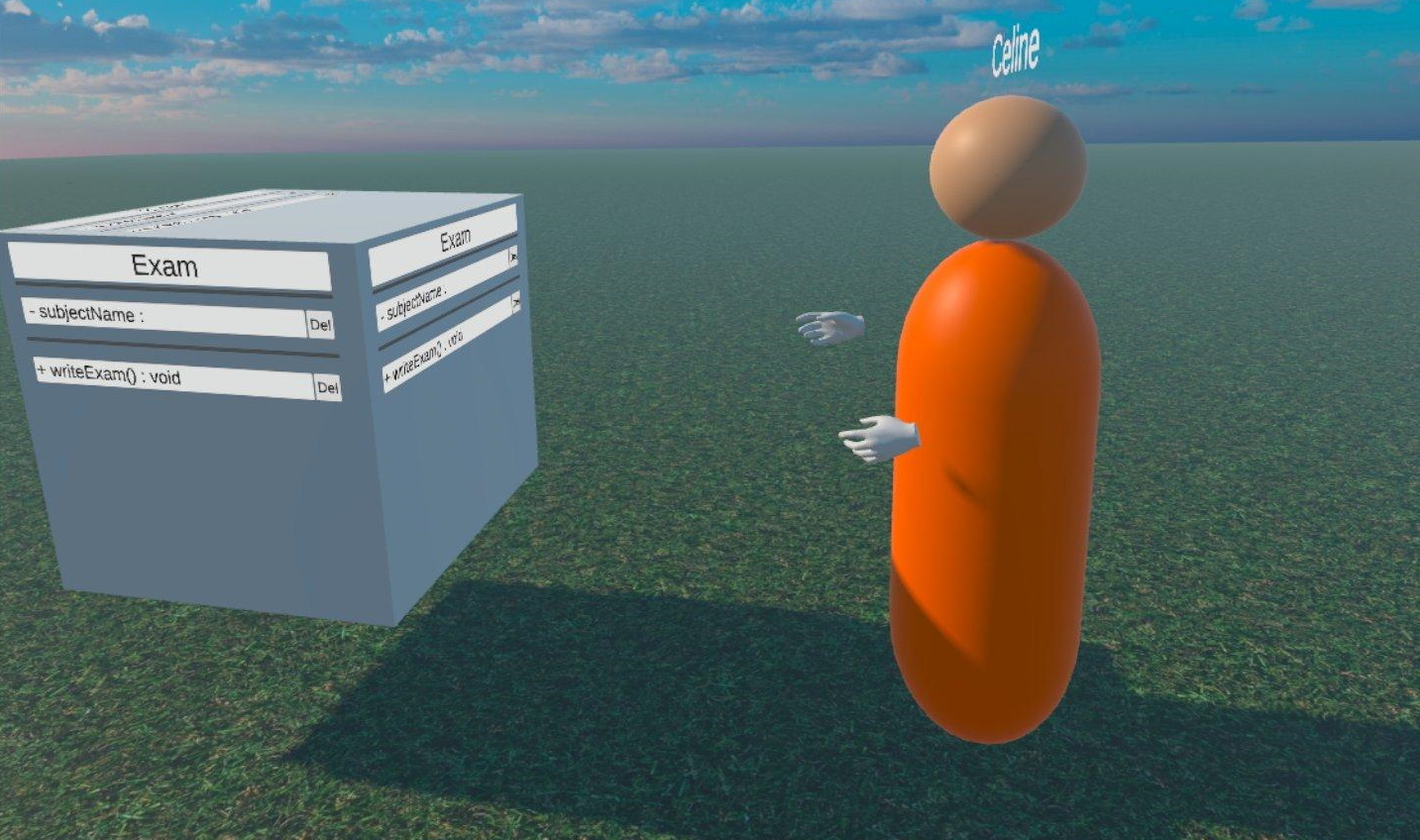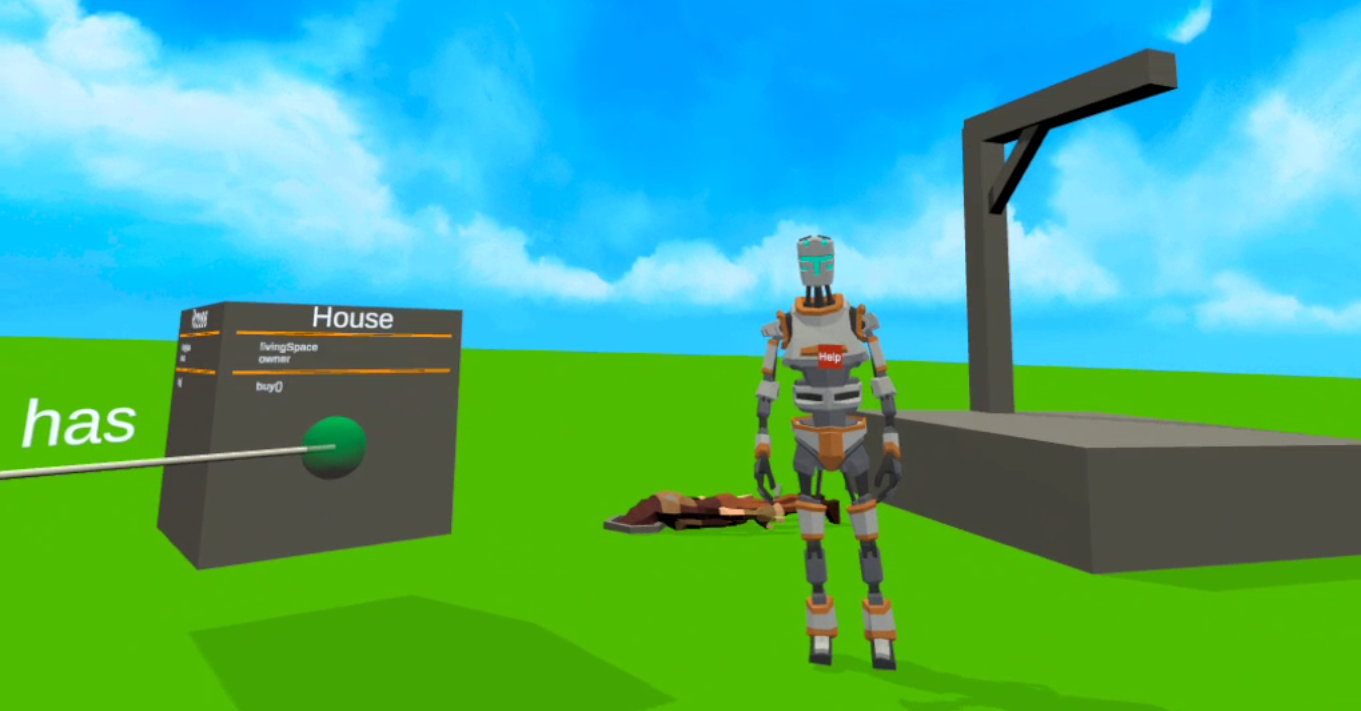VR UML Modelling
Collaborative UML Modelling in Virtual Reality

Modeling is a key activity in conceptual design and system design. Through collaborative modeling, end-users, stakeholders, experts, and entrepreneurs are able to create a shared understanding of a system representation. While the Unified Modeling Language (UML) is one of the major conceptual modeling languages in object-oriented software engineering, more and more concerns arise from the modeling quality of UML and its tool-support. Among them, the limitation of the two-dimensional presentation of its notations and lack of natural collaborative modeling tools are reported to be significant. In this paper, we explore the potential of using Virtual Reality (VR) technology for collaborative UML software design by comparing it with classical collaborative software design using conventional devices (Desktop PC / Laptop). For this purpose, we have developed a VR modeling environment that offers a natural collaborative modeling experience for UML Class Diagrams. Based on a user study with 24 participants, we have compared collaborative VR modeling with conventional modeling with regard to efficiency, effectiveness, and user satisfaction. Results show that the use of VR has some disadvantages concerning efficiency and effectiveness, but the user’s fun, the feeling of being in the same room with a remote collaborator, and the naturalness of collaboration were increased.
Gamification-Based UML Learning Environment in Virtual Reality
Modeling is a key activity in conceptual design and system design which makes learning and understanding modeling languages like the Unified Modeling Language (UML) important. Many interactive UML learning applications exist and also gamification-based alternatives have been proposed in recent years to promote the engagement of learners. However, none of the existing approaches provide an immersive learning environment that can be used to increase interactivity while learning. As a consequence, existing UML learning applications cannot create a feeling of presence that can positively influence learning outcomes, and the potential of gamification is not fully exploited. To overcome this problem, in this demo paper, we present an immersive gamification-based UML learning environment in Virtual Reality (VR) to practice modeling class diagrams in an interactive way. The VR environment provides minigames and multi-viewpoint modeling features to learn creating class diagrams. The multi-viewpoint component highlights correspondences between a class diagram and a 3D model of an example system. The goal of this approach is to improve the learners’ motivation, make the learning process an enjoyable experience, and boost learning outcomes.
